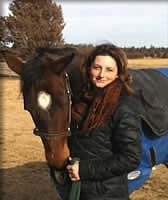5 Tips for Taking Photos to Send to Your Equine Veterinarian

We equine veterinarians are frequently asked to consult on photographs and videos clients send us digitally. This can include images of wounds, conformation abnormalities, or lamenesses. Reviewing these videos or photos is technically telemedicine and a service your veterinarian might choose to provide for her or his clients. Typically, a valid veterinary-client-patient relationship (VCPR) must be in place first. In most states this means the veterinarian must have seen the horse in person in the last 12 months. Note, however, that some states’ veterinary examining boards have temporarily loosened this criteria in response to the COVID-19 pandemic to offer practitioners and horse owners more flexibility.
In many instances, this type of information-sharing can ultimately be a win-win for the care of the horse. But some instances veterinarians find frustrating because—despite their best efforts—they can’t glean the information they need from the images a horse’s owner or caretaker sends.
How can you as an owner help your veterinarian? Here are basic tips from my experience:
- Ensure the area has adequate lighting, and avoid excessive backlighting. Barns are often dark, and overhead lighting can throw shadows, so use natural lighting if possible. Otherwise, flash or fill lighting can help.
- If taking an image of a wound or other injury, focus the photo on the area in question. Blurry images are unhelpful.
- If your horse has sustained a bloody wound, clean it so blood doesn’t obscure the wound itself.
- Include photos that zoom in and show the affected area in detail, but also zoom out to provide a view that shows more of the horse to help orient your veterinarian to the injury’s location.
- Use a reference object—such as a coin, pencil, or ruler—in the photo to show scale. Doing so will give your veterinarian context and perspective.
When sending a video, all the above apply. For any lameness, your veterinarian will likely need views from the front and back as well as the sides to make a full evaluation.
Keep in mind that a veterinarian can often obtain a great deal more information from an in-person examination, which allows for palpation, exploration of the wound, or viewing from multiple perspectives. If your veterinarian declines to make a diagnosis or recommend a treatment based on digital images, it’s typically because he or she wants to make the most accurate treatment plan possible for your horse and doesn’t want to miss a key finding that would affect the horse’s outcome.

Written by:
Wendy Krebs, DVM
Related Articles
Stay on top of the most recent Horse Health news with















